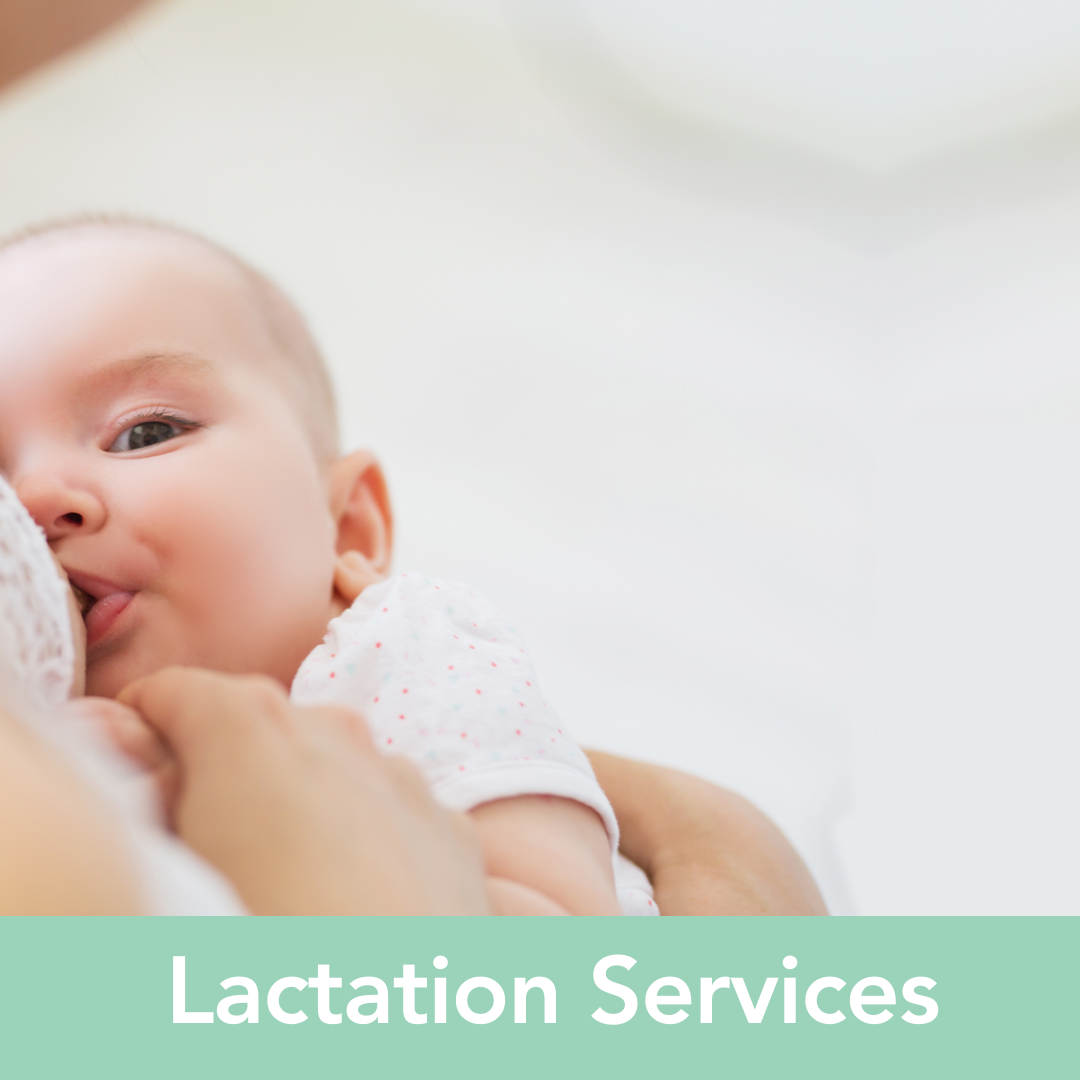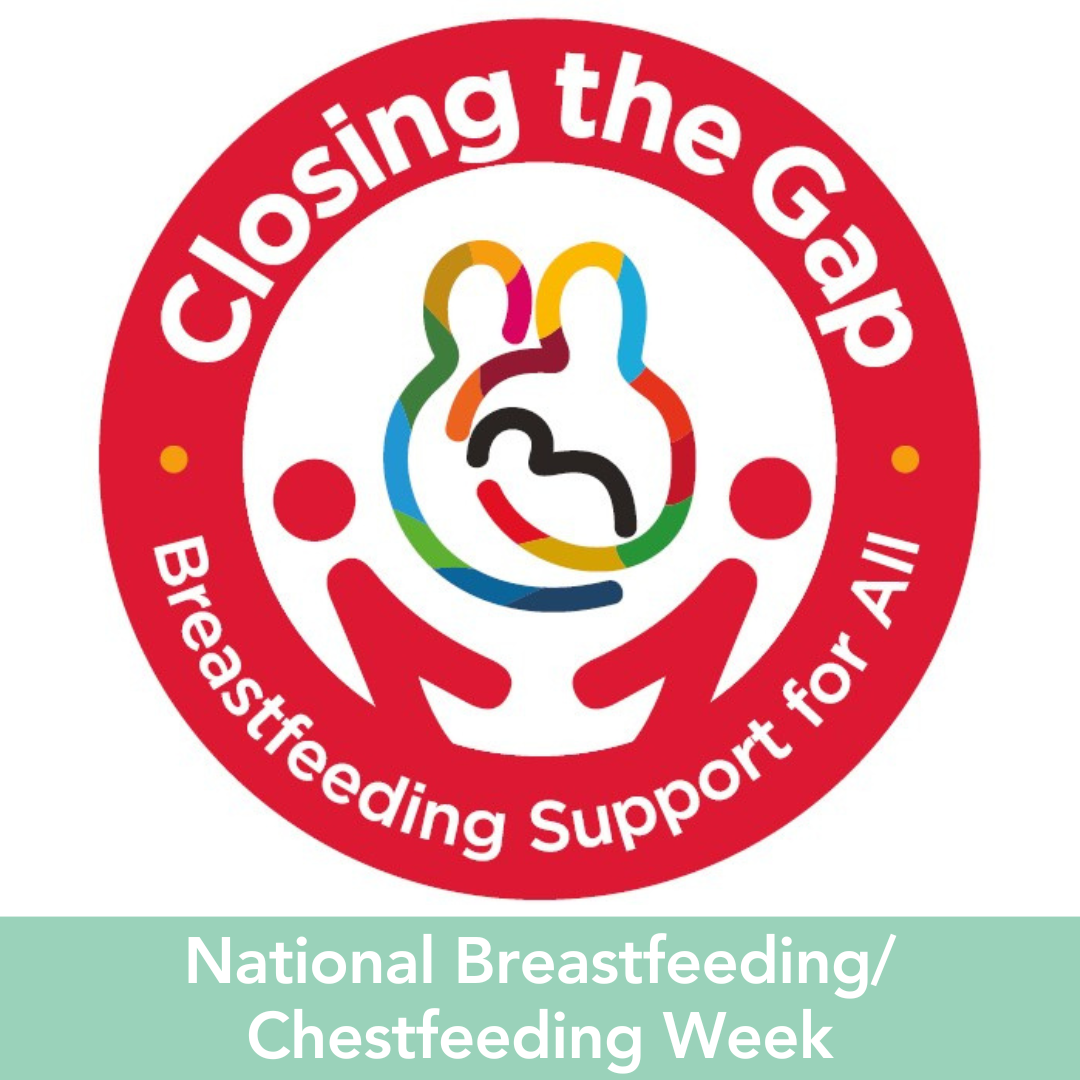Getting Off to a Good Start
Breastfeeding/chestfeeding is natural but it can take a little time for breastfeeding/chestfeeding individuals and babies to learn. Pregnancy is a great time to get information and talk to health care providers and others who know about breastfeeding/chestfeeding to discuss any questions or concerns you might have.
After having your baby, it is recommended to start breastfeeding as soon as possible. It is also a good idea to keep your baby with you skin to skin for the first couple of hours or until your baby has their first feed. Having your baby on your chest will encourage them to latch and start feeding.
During the first few days, you will be producing a different type of breastmilk/chestmilk, usually yellow, thick and immune-rich, called colostrum. Did you know that when your baby is born, their stomach will be about the size of a cherry? The amount of colostrum is perfect for your baby’s stomach. Your baby will also want to feed often. After a few days, your baby will get more milk and will start gaining weight.
Avoid using pacifiers (soothers) and bottle nipples while your baby is learning to breastfeed/chestfeed.
Breastfeeding or chestfeeding is the normal and unequalled way to feed babies. It is also important for child caregivers, babies and the community. Health Canada and the Thunder Bay District Health Unit recommend exclusively breastfeeding or chestfeeding for the first six months, and continued breastfeeding/chestfeeding for two years or more along with the introduction of solid foods.
Importance of Skin-to-Skin
"Skin-to-skin" means to place your baby against your bare chest while your baby is wearing just a diaper. You can keep the baby warm by placing a blanket over their back. Keeping your baby skin-to-skin after birth is better than keeping them swaddled in a blanket. All child caregivers are encouraged to practice skin-to-skin.
Skin-to-skin is important because it helps to:
- Get breastfeeding/chestfeeding off to a good start
- Increase breastmilk/chestmilk supply
- Keep baby comfortable and reduce crying
- Stabilize baby’s heart rate, temperature and breathing rate
- Stabilize baby’s blood sugar
For more helpful information, you can visit the following resources:
- Latching Your Baby (Video): shows how to latch your baby on to the breast/chest and how to tell that they are drinking well.
- Breastfeeding/Chestfeeding Positions (Video): goes over some of the most common ways to position your baby at the chest.
- Breastfeeding/Chestfeeding Matters (PDF): Covers many topics about breastfeeding, including how to get started, and suggestions for common issues and concerns.
- Breastfeeding/Chestfeeding for the Health and Future of Our Nation (PDF): A resource to support Aboriginal individuals with breastfeeding, including traditional teachings.
Baby Feeding Cues
Feeding cues are the signs your baby gives to show you when they are ready to feed and when they have had enough to eat.
How often and how long babies feed is determined by your baby’s needs and cues. Newborn babies usually feed every 1-3 hours, 8 or more times in 24 hours.
Feed your baby when you see these early feeding cues:
- Eyes and eyelids moving in light sleep;
- Bringing hand to mouth;
- Turning head and rooting (reaching with mouth).
Responding to your baby's cues will help to make breastfeeding/chestfeeding easier. It will also help build a good milk supply and prevent full breasts (engorgement). Your baby will probably cry less and gain weight faster. For more information on feeding cues:
- Feeding Cues and Behaviour (Video): describes how you can tell when your baby is hungry and respond to their feeding cues.
- Feeding Cues Chart (PDF): pictures that show how your baby will tell you they are hungry
Signs that Breastfeeding/Chestfeeding is Going Well
Many parents worry that if their baby is breastfed/chestfed, they won’t be able to be sure their baby is “getting enough." There are signs you can look out for that your baby is drinking enough milk.
Your baby is getting enough milk if they:
- Feed at least eight times in 24 hours (whenever they show signs they are hungry)
- Is latched and sucking strongly
- You can hear swallowing (a “ca” “ca”)
- Has enough wet and “poopy” diapers
- Is satisfied after feeds
- Is gaining weight as expected
Signs that Feeding is Going Well (PDF) is a helpful graphic that shows how often your baby should be fed and how you can tell your baby is getting enough milk.
Expressing and Storing Breastmilk/Chestmilk
If breastfeeding/chestfeeding doesn't go as planned or your baby is not ready to breastfeed/chestfeed right away, it’s important to learn how to express your milk to feed your baby. Learn from your nurse or lactation consultant about how to give your baby your milk from a spoon or a cup until your baby learns to breastfeed/chestfeed well.
Hand expressing is a way to collect your breast/chest milk. No buying or sterilizing equipment is required. Just wash your hands and use a clean container like a spoon or a cup. It’s a useful skill new parents can learn with a bit of practice. Before you know it, you will be able to use hand expression easily.
Reasons to Hand Express Include:
- To help soften your breasts/chest and help baby to latch if your breasts/chest are/is very full (engorged)
- Expressing a few drops to get baby interested in latching
- If done after breastfeeding/chestfeeding, it can help to increase your milk supply
- Collecting and storing milk if you will be away from your baby
- If you are using a breast/chest pump, hand expressing in combination with pumping can increase the volume of milk you are able to express.
Follow the links below for more information
- How to Hand Express (Video)
- Cup Feeding for Small Babies (video below) demonstrates cup feeding technique for expressed breastmilk/chestmilk:
For more information on expressing milk and where to access breast/chest pumps, please contact the Healthy Babies Healthy Children Program at (807) 625-5900 or toll-free at 1-888-294-6630
Breastfeeding/Chestfeeding during Painful Procedures
As a caregiver, we typically want to protect our children. Fortunately, breastfeeding/chestfeeding can help during painful procedures such as vaccinations or heel sticks!
There is evidence that breastfeeding/chestfeeding babies during painful procedures cry less than babies who were not nursed during the procedure. On top of that, breastfeeding/chestfeeding during painful procedures reduces the baby’s pain and distress.
Start by undressing the baby so that its body part is visible for the procedure to take place. Then, start breastfeeding/chestfeeding before the procedure, and make sure that the baby has a good latch. Continue nursing the baby during and slightly after the procedure for optimal benefits.
After the early days…
Parents or child caregivers often have questions about how to keep breastfeeding/chestfeeding as their baby grows and life changes.
A common question is how to start feeding solid foods at 6 months. The guide Feeding your Baby will give you information about how to know when your baby is ready for solids and what foods are appropriate to give your baby.
If you are returning to work while you are breastfeeding/chestfeeding, ask your employer about how they can support you. Breastfeeding/chestfeeding caregivers need some flexibility to schedules for feeding and expressing, a place to express and store breastmilk/chestmilk and supportive management and co-workers.
Did you know that breastfeeding/chestfeeding people are legally protected by the Ontario Human Rights Code? This means that people can’t be discriminated against because of their gender, including breastfeeding/chestfeeding. Individuals have the right to breastfeed/chestfeed in public anytime, anywhere free from harassment.
For more information on what the Human Rights Code means for pregnant and breastfeeding/chestfeeding individuals visit the Policy on preventing discrimination because of pregnancy and breastfeeding/chestfeeding.
Not Breastfeeding/Chestfeeding?
You have probably heard that there are differences between breastfeeding/chestfeeding and formula feeding. Breastmilk/chestmilk offers complete nutrition for babies. It also has with it many live cells that protect the infant from illness. It is not possible for formula to duplicate these unique qualities of breastmilk/chestmilk.
Breastfeeding/chestfeeding is encouraged and supported because babies who are formula fed are at higher risk for:
- More frequent infections
- Diarrhea
- Sudden Infant Death Syndrome (SIDS)
- Some childhood cancers
People who don’t breastfeed/chestfeed after birth have a higher risk for:
- Postpartum bleeding
- Osteoporosis (brittle bones)
- Breast & ovarian cancers
Formula feeding is expensive, and financially costs a lot more than breastfeeding/chestfeeding. Information and samples from companies that make formula and other feeding products may encourage you to feed your baby formula. Giving formula supplements can decrease milk supply and make it difficult for caregivers to breastfeed/chestfeed.
If you are feeding your baby formula because you are having difficulty with breastfeeding/chestfeeding, most problems with breastfeeding/chestfeeding can be resolved with help. Some babies with critical illness or in a neonatal care unit who need supplements may receive pasteurized breast milk from a Human Milk Bank.
Families who have a medical need or who have chosen to formula feed need support and information on the type of formula to use, how to prepare, store and feed formula. For more information on how to safely choose, prepare, feed and store infant formula, visit the Kids & Food page.
For Further Information
Call the TBDHU Lactation Services: (807) 625-8827
Or Toll-free 1-888-294-6630



